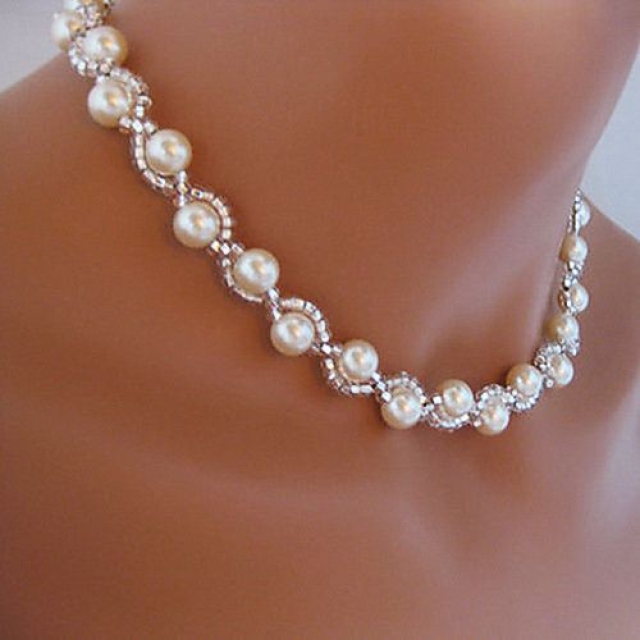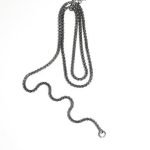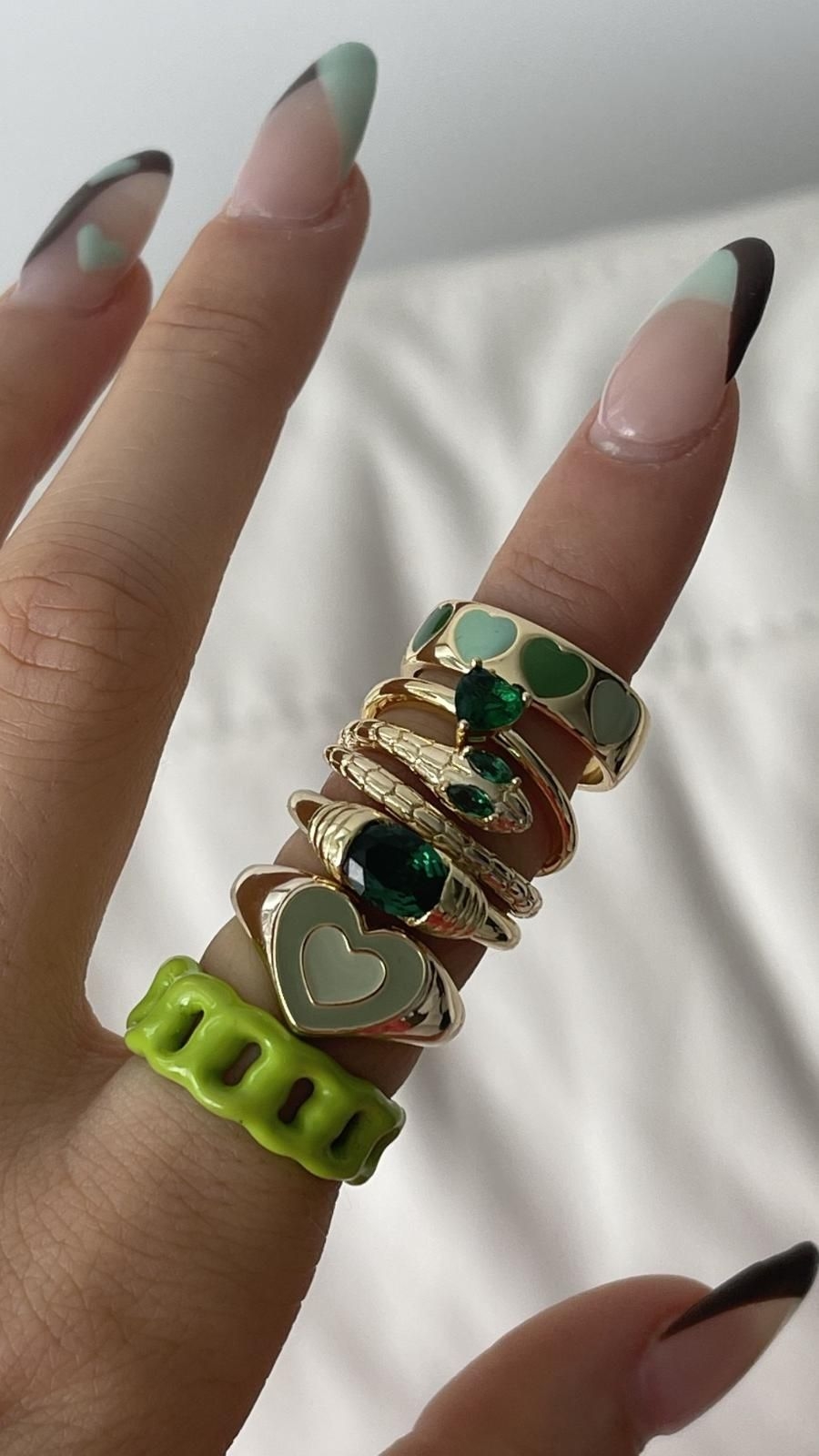3D printed jewelry material is an emerging field in the world of fashion and design. There are several different types of 3D printed jewelry materials available to create anything from custom-designed rings, bracelets, necklaces, and other unique pieces that can be crafted to fit exact measurements or designs. This type of printing utilizes the latest in technology and is growing more popular because it allows for intricate designs that are either difficult or impossible to craft using traditional methods.
Different types of 3D printed jewelry materials range from metal alloys, plastics, polymers, precious metals like gold and silver, as well as ceramic and porcelain. Each type has its own distinct features that make it desirable for use when creating custom pieces of jewelry.
Metal Alloys: Metal alloys have been used in the production of jewelry since ancient times; however, modern 3D printing technology can take this age-old medium to a whole new level by producing intricate pieces with superior precision. Depending on what you need your final product to look like will depend on which alloy best fits the task.
Commonly used metals include stainless steel, bronze, iron and brass while some more exotic options such as titanium may be used for certain projects. Not only do these metals provide durability but they also provide luster and long-lasting shine that is pleasing to behold.
Plastics: Plastics are becoming increasingly popular due to their low cost relative to metals yet still render a wide array of choices for designers. ABS plastic is reasonably strong while also being lightweight – thus ideal for wearable items such as jewelry – however PLA offers higher detailing due to its rigid structure which allows for small parts with fine details to rendered properly without sacrificing too much strength or weight characteristics.
These materials also come in a variety of different colors so can be tailored towards certain looks while potentially saving money over metal alloys depending on the requirements at hand.
Polymer Clay: Polymer clay is another interesting option available when working with 3D prints – not only does it offer flexibility similar to plastic yet with better strength characteristics but it can also be tinted in myriad colors allowing for easy customization (in addition they offer a heat resistance quite useful when dealing with finer parts).
Furthermore this material often proves charmful aesthetically speaking although users should keep in mind that adding additional pigments may lead miniaturized parts filled leading objects looking beefy overall rather than sleek cool looking pieces desired by many jewelers nowadays.
Overall there are numerous possibilities when crafting jewelry using 3D printing techniques – both traditional materials like metal alloys as well as offbeat solutions such as polymer clay can prove ideal depending on what piece you have envisioned ahead of time. By carefully selecting the appropriate material based on function then aesthetics users will have no issues creating stunning personalized accessories fit perfectly tailored for your needs.
The Technology Behind 3D Printing for Jewelry Manufacturing
The technology of 3D printing has revolutionized the use of jewelry material in manufacturing. This innovative process brings unprecedented speed and accuracy to the production line. And, it is changing the way customers think about fashion and style.
Today’s 3D-printed jewelry is a combination of several processes tailored to create precise and intricate designs that are otherwise next-to-impossible for handcrafting techniques. The most popular materials used in 3D printing for jewelry fabrication include;
- Plastics
- Metals
- Stone
- Resin
Plastics: PLA and ABS plastics are being used as an alternative to traditional stainless steel or gold designs. These materials can be quickly heated, melted, formed and then cooled to acquire the desired dimensions. Furthermore, plastics offer a higher degree of customizability that makes them perfect for creating intricate pieces that cannot be achieved with other materials such as metal or stone.
Metals: Metals like gold and silver can be produced by taking advantage of sintering technologies, which involves working with powder form alloys through heating to obtain new shapes. Metal 3D printed products are stronger than conventional jewelry components since they are not subject to breakage when cut into small pieces or due to their malleability like metals in other forms do. Additionally, there is greater flexibility with design ideas when utilizing metal for 3D printed pieces.
Stone: Natural gemstones mean durability but limit customizability when working by hand. With 3D printing however, the color and texture of different stones can be combined into one material without compromising on strength or quality thus making it ideal for designing intricate details within the same piece such as lace-like details or detailed cavities unseen before with traditional carving methods. Additionally these stones tend to be light weight compared to more solid materials thus comfortable over extended wear times.
Resin: Combined particles of acrylics and plastic create a durable resin which is perfect for achieving fine details in 3d printing due its high-resolution capabilities allowing even dent pieces of far less than 1mm diameter possible while holding onto the original shape through cooling processes – yet another benefit from modern high tech jewellery production methods.
Overview of 3D Printed Jewelry Materials and Their Properties
3D printed jewelry materials have entered the world of fashion with a bang. This versatile and inexpensive method of producing items that can be tailored to individual tastes is reshaping the way the jewelry world operates.
By using 3D printing technology, designers and makers are able to create intricate pieces from a variety of material options. Each 3D printed jewelry material has its own unique properties which enable it to be used for specific types of jewelry design such as rings, pendants, and earrings.
Polyamide (nylon), stereolithography resin introduction process (SLA) and selective laser sintering (SLS) are one of the most common 3D printed jewelry materials used today due to their affordability, wide range of colors, and versatility.
Polyamide is one of the first synthetic materials used in 3D printing due to its ability to produce highly detailed designs in an array of finishes including glossy polishes and matte looks, making it perfect for those looking for intricate filigree patterns or elegant designs with a modern touch.
Additionally, this type of nylon is durable and will not tarnish over time as many other types can do when exposed to moisture or oils on the skin.
Stereolithography Resin is another popular choice amongst 3D printed jewelry makers. This plastic-like material results in very smooth surfaces that can be colored easily for added appeal and effect. Its low melting point ensures no melting during high temperature post processing while the strength makes it ideal for wearables like earrings as well as smaller charms such as alphabet letters or symbols made from interlinked pieces.
Selective Laser Sintering (SLS) has also become increasingly popular in recent times thanks to its ability to print complex shapes with uniform detail regardless their size or orientation simply by using extremely powerful lasers instead traditional thermoplastics like those used in polyamide production processes.
This method offers increased durability, even when exposed to extreme temperatures or harsh environments thanks its low thermal expansion ratio which ensures stability and prevents cracking or splitting under pressure or abuse making it an ideal choice for more intricate designs where high precision is required in order for them to function correctly.
Benefits of 3D Printed Jewelry Materials for Makers
3D printed jewelry material provides makers with a multitude of benefits that can make the process of creating pieces much easier and smoother. The materials are versatile and very easy to use. They are relatively hard-wearing, meaning that they can be used to make intricate pieces that will remain durable for years.
This allows makers to experiment with different styles and designs without fear of their pieces breaking due to poor construction. Additionally, it is possible to incorporate details into the metal which would normally be impossible with traditional metalsmithing techniques, enabling the creation of unique pieces.
3D printed jewelry materials are also much lighter than traditional metal components, making them ideal for creating custom pendants or earrings. This makes them great for those who want to create lightweight jewelry with a high level of detail.
It is also possible to combine multiple colors in one piece, which means that you have almost endless possibilities when it comes to design choice. With 3D printed jewelry materials makers can also choose from a wide array of finishes, including high polish and textured finishes alike.
Finally, an additional benefit of 3D printed jewelry material is its cost-effective nature. As compared to other metalsmithing options which require expensive tools for finishing and forging processes, the cost associated with 3D printing can be minimal depending on the specific project at hand; some projects may even cost nothing if you have access to a 3D printer already.
This significantly lowers the barrier to entry when it comes to experimenting in smaller batches of jewelry or learning more about the craft itself. Consequently, this encourages active participation in crafts such as silversmithing or goldsmithing instead of merely admiring well-made items created by experts in the field.
Common Drawbacks of 3D Printing for Jewelry Manufacturing
Despite its many benefits for jewelry production, 3D printing does have some drawbacks. Its biggest drawback is cost: although the technology is becoming increasingly more affordable, it’s still not as economical as creating jewelry by hand or even by traditional fabrication methods. This applies to both materials and labor – since traditional jewelry production has been fine-tuned to such a degree, digital jewelry manufacturing can’t keep up with conventional methods, at least yet.
Second, the range of 3D printing materials available for producing jewelry is currently quite limited. Yes there are specific alloys made for making jewelry but they are few in number and may not suit all designs.
Furthermore, these 3D printing materials may be harder to work with because they don’t respond the same way as traditionally produced metals do (i.e., soldering and casting) which poses a challenge for fine detail and complex curves in certain designs.
The common application used most-widely in the jeweler industry right now is basically an activated form of plastic called photopolymer resin that serves a basic purpose of making small-scale portable product samples with limited use cases / functions when compared to conventionally produced metal products and parts.
Finally there are issues associated with Printing Surface Finish which can include post-processing concerns regarding surface finish obstructive artifacts left from the build process – this issue can particularly arise while trying to produce intricate pieces where tiny cubic surfaces make it challenging for not leaving any residual material behind which can negatively affect overall component aesthetics.
This means that considerable amount of time must be devoted to post processing such as cleaning & polishing objects after they are printed in order eliminate any defects related these potentially visible markings before they make their way into marketable products for sale on retail stores shelves.
Eco-Friendly Production with 3D Printed Jewelry
3D printed jewelry materials have revolutionized the production of jewelry. The technology allows for a uniquely customized product that is both eco-friendly and cost effective. Environmentally conscious consumers can now wear jewelry made from recycled materials such as plastics, metal powder, recycled paper, and even wood. Some of the advantages of 3D printed jewelry materials are:
- Ideal for mass production – With 3D printing technology, it is easy to create large quantities of products with very little effort.
- Faster turnaround times – 3D printers produce parts quickly which means faster product turnaround times.
- Environmentally friendly – 3D printing creates zero waste which helps to cut down on energy consumption and pollution levels.
One example of a popular material used in 3D printed jewelry is PLA filament. PLA stands for polylactic acid and is derived from corn starch or sugarcane. It’s an environmentally friendly source that offers durability without sacrificing color or luster.
It has become one of the most popular 3D printed jewelry materials due to its low cost and variability in colors as determined by the user. PLA filament also offers flexibility, strength, excellent dimensional stability when exposed to heat, and good machineability in terms of detail reproduction using a fine nozzle head.
Another example of a material suitable for use with 3D Printed Jewelry machinery is stainless steel wire mesh. This wire mesh offers superior corrosion resistance when compared to other metals, making it ideal for high wear applications like bracelets and necklaces which may need to be worn all day long.
Its seamless forms also provide excellent protection against kinks in any pattern or line created with this material. Additionally, stainless steel’s ability to forge custom shapes makes it perfect for creating unique earrings or necklaces that stand out from your traditional pieces.
Finally, Titanium sheets can be formed into complex shapes through the process of self-welding at room temperature using a combination of thin sheets made from Pre-certified titanium alloys such as Grade 5 Titanium (6/4).
By pressing two pieces together they form into one single piece that has hardness equal to that achieved after heat treatment finishes normally conducted on other titanium fabricated parts like rings which are finished via vacuum chamber hardening procedure at extremely high temperatures reached only by induction heating processes.
This type of hardness paired with lightweight properties make it perfect for crafting durable yet lightweight pieces applicable especially when using larger surface area structures typically applicable when creating bangle styles commonly seen in fashion lines today.
Creative Applications for 3D Printed Jewelry Material
3D printed jewelry material is becoming increasingly popular within the modern jewelry industry. This is due to its cost-effective, precise and lightweight characteristics. Some unique advantages of 3D printed jewelry material include increased complexity of design and improved customer experience.
One great creative application for 3D printer jewelry material is custom made pieces for every customer’s individual preference. A jewelry artist will be able to accurately measure the customers’ wrists, neck and other desired body parts using a 3D scanner, which allows for accurate replication on a digital scale.
Additionally, they can design intricate patterns with intricate designs or even playful shapes such as animals or cartoon characters that reflect a more personal connection with that particular item of jewelry. Furthermore, environmentally conscious customers might prefer to utilize recycled materials in their chosen products – something which would be incredibly hard to accomplish without the precision capabilities of 3D printed materials.
Not only can 3D printing creatively add comfort through custom fit items but it has also opened up exciting opportunities for designers to explore innovative new possibilities when it comes to designing unique pieces of jewelry. Complex geometries can now be produced at certain locations along a chain or ring that cannot normally be achieved with traditional manufacturing practices.
Furthermore, 3D printers enable experienced jewelers produce beyond currently known design limits such as complex spirals, twirls or ‘snowfall’ type designs that create visual interest in whatever array they are explored within – whether it’s with metal or gemstones.
Overall, there are an incredible amount of uses for this technology within the jewelry industry due to its precise nature and ability to replicate complex geometry correctly. Plus it is capable of working with any number of different materials ranging from precious metals such silver or gold – even glass beads allowing for some truly unique custom crafted pieces. And as the technology evolves further we will start seeing these advancements push both artistic expression and functionality into unknown territories.
Design Considerations for Working with 3D Printed Jewelry Material
Designing jewelry with 3D printed materials can offer a unique opportunity for creative exploration. 3D printing technology is rapidly becoming more accessible and in turn so are the materials that can be printed with it. While many unknowns exist about how to design with 3D printed jewelry material, there are still some key considerations to keep in mind.
The first factor to consider is what type of material to print the jewelry out of. Currently, the most commonly used materials are plastics and metals. Plastics such as ABS and PLA are lightweight whilst metal filaments work best for heavier objects where a more positive resonance is desired.
Both types have their pros and cons. For instance, plastic is slightly cheaper and easier to work with, but may not yield results that last as long as metals would. Therefore depending on your needs or project different materials may be better than others, for example cost could drive you towards plastic construction projects instead of metalic ones.
Durability is another important factor to keep in mind when designing 3D printed jewellery projects, particularly if creating items that will be worn frequently. The choice of filament should take into account how strong it will be and how well it will resist impacts or external forces, depending on the intended use.
Certain finishes can also help increase durability such as applying protective coatings on top of finished prints which can provide an additional layer of protection against wear and tear over time.
Finally, aesthetics should also play an important role in your design process when working with 3D printed jewelry material. Color selection should bring out any pattern details or texture effects you’re trying to emphasize while metallic finishes can add shine, depth and complexity depending on what look you’re going for.
Plastics come in a variety of colors while metal filaments can come pre-finished or can be electroplated after being printed if desired for longer lasting colorations or finishing effects-this could significantly improve item aesthetic qualities both during manufacture (refershing dye baths) and post production manipulation (moulding).

Welcome to my jewelry blog! My name is Sarah and I am the owner of this blog.
I love making jewelry and sharing my creations with others.
So whether you’re someone who loves wearing jewelry yourself or simply enjoys learning about it, be sure to check out my blog for insightful posts on everything related to this exciting topic!





